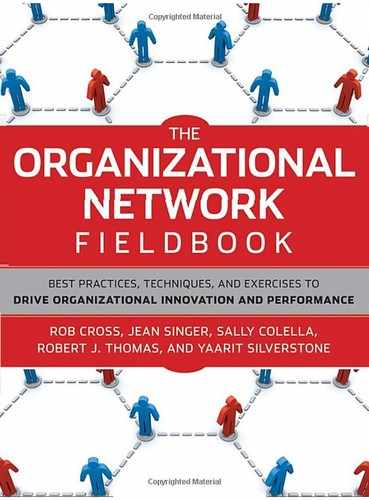16.4. Moving Toward and Moving Away From
In relationships with those in our network, we constantly choose whom we engage and how we interact. We select our friends and allies and then take actions that either bring us together or move us apart. These two exercises heighten this experience so that participants can be more aware of how they manage their networks and create close and distant relationships with others.
16.4.1. Exercise 5. Allies and Opponents
This activity can generate lots of energy very quickly.
16.4.1.1. Instructions
Each person chooses someone to be close to (an ally) and someone to stay away from (an opponent). They do not reveal their choices. They then move around the room, trying to stay away from the opponent and close to the ally. Most likely, someone's ally is someone else's opponent, so the result will be rather chaotic, with rapid movement around the room and creative maneuvering. Make sure nobody gets hurt on furniture in the room.
Stop the activity after five or six minutes.
16.4.1.2. Debrief
What was hard? What was easy?
Did you know who had chosen you as an ally or an opponent?
What does that mean in terms of life and work?
How do you develop the capacity to deal with chaos?
16.4.1.3. Learning Points
This exercise can help expose the ever-shifting dynamics in the workplace. It's not possible or even desirable to stay away from opponents and close to allies at all times. And it's impossible to track these dynamics.
16.4.2. Exercise 6. Scene Work
This exercise can be used after a warm-up exercise, in preparation for a group conversation, or to provide a break for a group or pair stuck in an unproductive pattern. It helps a group develop an awareness of relationship building, communication, and emotional intelligence. It works best in groups with fewer than 10 people.
16.4.2.1. Instructions
Two people enter a scene. Either person can start the scene anyway he or she likes—by imagining a particular setting (a café, a PTA meeting) or by assuming different characters (a doctor, a parent). One person starts by saying a sentence with a clearly expressed emotion. If the other person experiences the emotion as positive, he or she takes a step toward the partner and then responds. If the emotion is experienced as negative, the person takes a step away and then responds. For example:
John starts by saying, "When you look at me like that, I want to scream." (anger).
Alice listens, pauses, steps back, and responds, "I can't wait to throw my glasses at you."
John listens, pauses, steps back, and responds, "I would pick them up and put them back on your nose."
Alice listens, pauses, steps forward, and so on.
Encourage the participants: Each pair can experiment with heightening negative emotions, such as anger and sadness, which would lead to a continuous stepping back. They could also play with opposites—one round consisting of all negative emotions and the next of all positive. Or one person could use negative emotions and the other positive, which would mean that one person would always step forward and the other would always step back. The important point is to listen carefully, pause, step, and then respond.
To practice innovation, a scene exercise such as this can include various rounds. For instance, John and Alice, described previously, could assume different characters or different situations for each round and see how the experience changes.
16.4.2.2. Debrief
What was the experience like as an individual and as a pair?
What did you notice about taking a pause and the physical movement before responding?
How quickly did a pattern emerge, and what did it take to change it?
What can you learn from this?
16.4.2.3. Learning Points
Emotions play a crucial role in communication. It's important for participants to note that they have a choice in the emotions they bring to their interactions and in how they react to others' emotions. They can change the dynamics of a conversation by listening carefully, pausing, and then choosing how to respond. It's often important to slow down and gather your energy before responding verbally.
